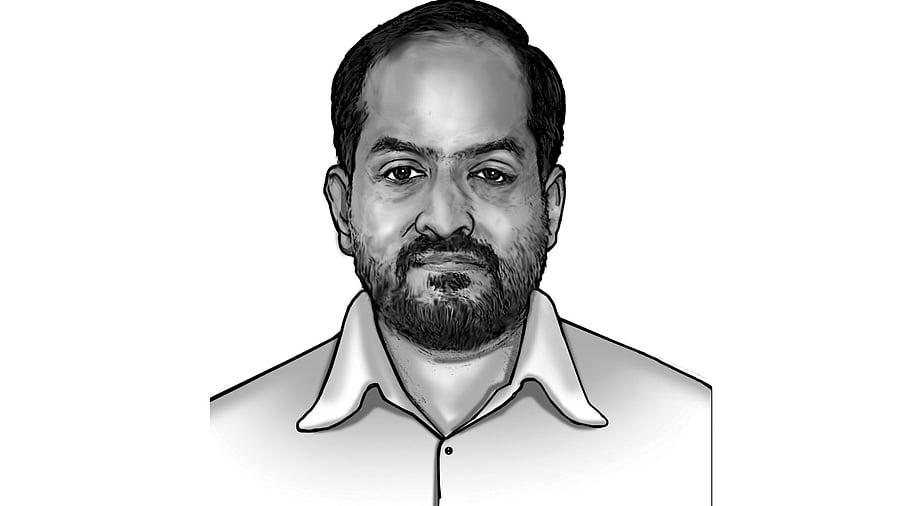
Venkatesh Nayak wakes up every morning thinking someone somewhere is hiding something
Last month, when Parliament was debating major issues of public importance like the One Nation One Election bills and the country’s 75-year record of implementing the Constitution, the Minister of State for Finance tabled a landmark audit report in both Houses. The Comptroller and Auditor General of India (C&AG), had critically examined the performance of the Income Tax Department (ITD) vis-à-vis the collection of tax demands from individual income tax and corporate tax payers between November 2020 and January 2023. This report drew hardly any attention both within and outside Parliament, thanks to the controversy over B R Ambedkar’s name being raised during the debate on the Constitution.
The C&AG’s findings about how the ITD has been dealing with the issue of outstanding tax demand (OTD) come as a rude shock to every honest taxpayer. OTD refers to the volume of money that the taxman believes ought to be recovered from individual and corporate assessees over and above what they actually paid in a financial year. C&AG notes that OTD as a percentage of our Gross Domestic Product has increased from 4.76 per cent in 2016-17 to 5.88 per cent in 2021-22. Readers may ask – “that’s a minor increase, so what’s the big deal?” OTD volumes reveal the true story. The first whopper of a revelation is that during this period, OTD has always been higher than the quantum of taxes actually collected! For example, while the total amount of direct tax collected in 2016-17 was Rs 8.49 lakh crore, OTD accumulated for that year was Rs 10.44 lakh crore. In 2021-22 while the collections totalled Rs 14.12 lakh crore, the OTD ballooned to Rs 18.84 lakh crore – an increase of 84 per cent.
Now for the second big blow – while a large number of the OTD cases are stuck in dispute resolution proceedings, several for more than a decade, the C&AG discovered that as much as Rs 3.32 lakh crore of OTD was not disputed by the assessees. ITD had simply failed to recover this amount. 50 per cent of this undisputed amount had remained unrealised for more than two years, as of March 31, 2022.
The third gut punch is the C&AG’s finding that 97 per cent of the outstanding tax demand, according to the ITD, is ‘difficult to recover’. In 71 per cent of such cases, the ITD is of the view that there were not enough assets or simply no assets at all, that could be lawfully attached for realising the tax dues from defaulting assessees. In October 2019, the Government introduced a faceless assessment system for handling tax disputes aimed at improving transparency for taxpayers and enhancing accountability for the tax authorities. Now for the knockout punch – the C&AG noticed that in 20 per cent of the OTD cases, ITD admitted that the defaulting assessees are just not traceable, they have become faceless!
These tax defaulters are not small-timers. The C&AG noticed that the top 10 defaulting corporate tax assessees account for more than Rs 1 lakh crore in OTD. Six of them are Delhi-based, under the very nose of the Finance Ministry. Eight of the top non-corporate defaulting assessees are individuals accounting for an OTD of almost Rs 2.7 lakh crore, one of whom is based in Bengaluru and owes the taxman more than Rs 2,800 crore.
Unlike the identities of wilful loan defaulters which banks are publicly disclosing on their websites, of late, the C&AG identifies the tax defaulters only through alphanumeric codes in its audit report. This is because the default position in the income tax law is to treat assessee records as sarkari secrets, as any RTI activist who has tried to obtain such information will tell you.
However, the biggest irony is the ITD’s practice of publishing the names of rich matinee idols and wealthy cricketers along with the amount of income tax they pay every year. If the confidentiality provision in the tax law is no hindrance for such disclosure, should the ITD not reveal the names of wilful tax defaulters also? There is a statutory exception to the confidentiality requirement which empowers the Chief Commissioners of Income Tax to disclose assessee information on public interest grounds. The enormity of the OTD phenomenon is the compelling public interest ground for transparency of tax defaulter information.
After all, the legal provisions that allow any person to file a tax evasion petition against any assessee are intended for the ITD to obtain citizens’ help for detecting such cases. Citizens can assist the ITD in tracing those assessees who have allegedly disappeared into thin air. They can also help in digging out details of these defaulters’ assets of which the taxman claims to have no record.
We are barely two weeks away from the next budget session. It is crucial that MPs raise these issues on the floor of Parliament and demand explanations from the Government.